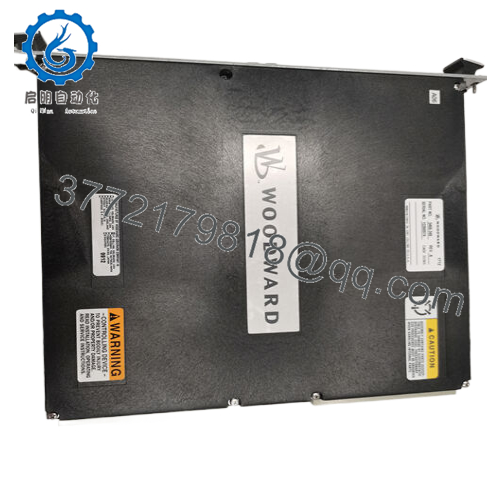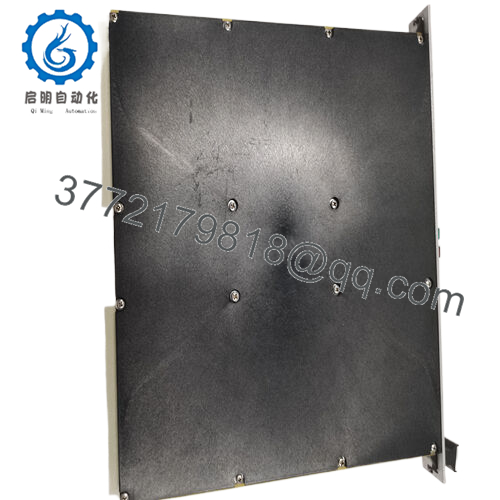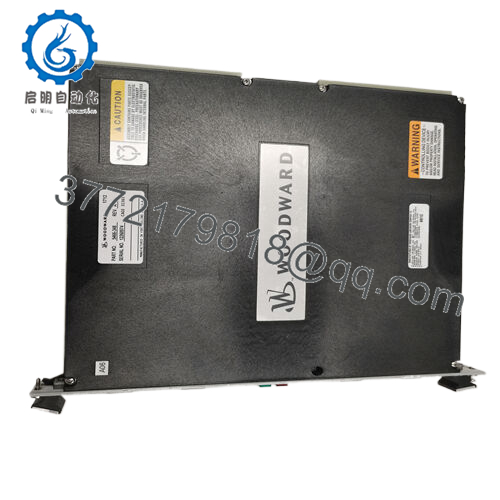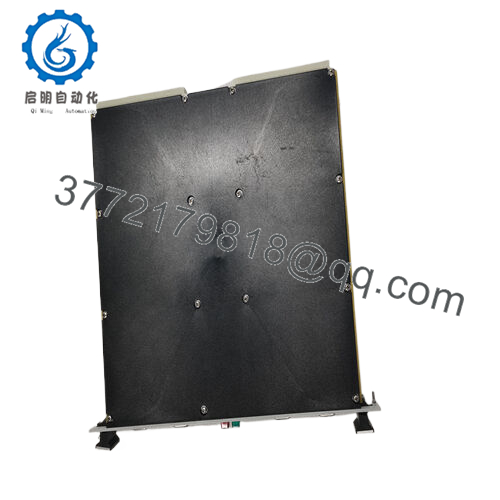Description
Product Model: 5466-348
Product Brand: Woodward
Product Series: NetCon / MicroNet SIO (Serial I/O)
Product Features:
- Three RS-485 ports, each handling one actuator driver with 5 ms update rate
- Fault detection and disable for communication errors per driver
- Remote monitoring, configuration, and position command support via RS-485 links
- Backwards compatibility with legacy MicroNet systems; newer SIO variants planned as replacements
Product Role & System Fit
In a turbine or engine control architecture, particularly in the Woodward / MicroNet / NetCon family, the 5466-348 plays a key communications role. It is a Serial I/O (SIO) module, often called NetCon SIO, that interfaces digital actuator drivers to the control CPU. In effect, the 5466-348 sits between the central logic (CPU) and the actuator drivers (EM or GS / LQ families), providing command and feedback over RS-485 lines.
Each of its three RS-485 ports can manage one driver (one per port), giving the system flexibility and isolation of control channels. The module accepts digital output commands (position demands, status polling) and relays back driver status or error signals. In this sense, it is a “communications bridge” rather than a logic controller.
In a full control rack, you might find a CPU module (MicroNet or NetCon series), I/O modules, power supply modules, and one or more SIO modules like 5466-348. The CPU handles control logic and sequences; the SIO handles driver communications; the driver modules then drive valves or actuators. Because the SIO uses RS-485, it can route wiring more flexibly, reduce wiring complexity, and allow modular scaling. The 5466-348 is also backward compatible: Woodward documentation notes that when newer SIO modules are adopted, they are drop-in replacements and operate in parallel in the same chassis.
In practice, if you upgrade a legacy MicroNet system, you can gradually migrate to newer SIO units while retaining old ones during transition. That helps reduce risk in field conversion projects. However, it’s worth noting that the 5466-348 itself is considered obsolete: Woodward is planning inactivation of legacy MicroNet SIO modules by April 30, 2025, and recommends migrating to newer SIO units.
- 5466-348
Applications & Industry Context
Where would you find a 5466-348 in real-world plants? Its usage is common in generator sets, turbine control systems, marine propulsion systems, and power plant automation setups—especially in installations using Woodward’s MicroNet/NetCon control families.
In gas or steam turbine generator sets, the precision control of fuel valves, inlet guide vanes, or extraction valves often relies on actuator drivers receiving position commands from a central CPU. The SIO module like the 5466-348 ensures those commands are delivered reliably and status is fed back. In a mid-sized power plant with multiple turbines and redundant systems, you could see multiple SIO cards managing separate actuator channels.
Marine installations also benefit: actuator control modules aboard ships or floating rigs sometimes use RS-485 to route communication to engines or turbine servos. The 5466-348 is rugged in such settings and helps isolate control wiring from noise.
In retrofit or upgrade environments, many plants have older analog or custom driver arrangements. The 5466-348 is often used in retrofits to modernize actuation wiring without rewiring everything. Because it supports digital communication, it permits remote monitoring and reduces the number of field signals. Because the module handles fault detection and can disable faulty links, it helps protect the system from cascading errors in actuator networks.
As plants evolve and automation systems shift to more networked topologies, modules like the 5466-348 play a bridging role—linking traditional actuator drivers into modern distributed control systems. That said, designers must account for the impending retirement of legacy SIO modules, plan upgrades, or adopt alternative communication schemes before 2025 deadlines.
Technical Features & Benefits
Let’s examine what the 5466-348 offers, and why it’s still regarded in many systems as a proven, dependable component.
Multi-port RS-485 interface
It comes with three independent RS-485 ports. Each port supports a single actuator driver and operates with an update rate of 5 milliseconds (i.e. each driver can be refreshed every 5 ms) under the one-driver-per-port arrangement. This update rate is sufficient for many control loops, giving low latency and solid responsiveness.
Fault detection & isolation
One of its strong features is per-driver fault detection. If the communication to a driver becomes faulty (e.g. no response, error), that channel is disabled, protecting the rest of the system from errant commands or cascading failures. The CPU can monitor status bits and take action (alarm, fallback) when a driver link goes offline.
Remote monitoring and configuration
The 5466-348 supports remote driver parameter polling, configuration, and status retrieval over its RS-485 links. This means you don’t have to physically access each actuator driver to adjust settings or troubleshoot; you can do much remotely. Because of this, downtime and field intervention are reduced.
Precision position commands
It supports 16-bit position commands (no noise), facilitating high-resolution actuation control. Thus, actuator drivers can receive fine-grained demand values rather than coarse stepping.
Parallel operation & backwards compatibility
The module can operate in parallel with both legacy SIO units and newer SIO modules in the same chassis. That lets you stage upgrades gradually. The newer replacements (e.g. 5466-5007) are validated for drop-in compatibility and will eventually supersede the 5466-348.
Slide-lock mounting and module replacement
The design uses slide-locks (front handles) to eject or insert modules easily. That helps during maintenance since the 5466-348 can be removed or replaced with minimal disruption.
Reliability in industrial settings
Though the exact operating temperature specs or isolation ratings are not always publicly disclosed, modules like the 5466-348 are expected to satisfy industrial environment tolerances. Distributors list it as a rugged, factory original part.
One practical observation: many plants keep 5466-348 modules as spares due to their relatively stable performance over time and because replacements are becoming scarce as the module is phased out.
Installation & Maintenance Insights
Installing or servicing a 5466-348 module requires attention to wiring, signal integrity, redundancy, and future upgrade paths.
Rack mounting & module insertion
The module slides into card guides in the control chassis and plugs into a backplane or motherboard. It is secured by screws or slide-lock handles. When inserting, ensure proper alignment to avoid bent pins. To remove, toggle handles outward to partially extract before fully pulling.
Signal wiring practices
RS-485 cabling should use twisted pair, shielded lines, with proper termination resistors to prevent reflections. Keep communication wires separated from high-current power lines to reduce noise. Ground shields only at one end (control cabinet) to avoid ground loops.
Driver addressing and rate groups
Each driver in the network must have matching address switches that align with the CPU logic (GAP blocks or configuration). The 5466-348 supports independent rate groups on each RS-485 port if needed, giving flexibility in communication speeds.
Commissioning & diagnostics
Before connecting to field devices, run test communications from the CPU to each port, verify driver status, and monitor fault bits. The module’s fault LEDs should indicate channel health (errors or internal faults). During operation, monitor logs and error alarms. If a port shows consistent communication loss, inspect wiring, termination, or driver hardware.
Upgrades & migration planning
Given that the 5466-348 is flagged as a legacy unit to be inactivated by 30 April 2025, it is wise during maintenance windows to plan migration. Woodward recommends using newer MicroNet SIO modules (e.g. 5466-5007) in retrofit or greenfield designs. You can run new SIOs in parallel (same chassis) to test and migrate drivers gradually.
Spare-module strategy
Store a known-good 5466-348 as a hot spare. Because relatively few mechanical parts are inside, a swap often restores communication within minutes. Before installation, verify firmware matches CPU expectations and test on a bench setup.
Routine checks
Periodically inspect connector contacts and backplane alignment; check for oxidation or bent pins. Clean dust and ensure ventilation in the control cabinet. Monitor error logs for transient communication glitches that may signal aging wiring, connector fatigue, or driver problems.





 WhatsApp: +86 16626708626
WhatsApp: +86 16626708626 Email:
Email:  Phone: +86 16626708626
Phone: +86 16626708626


